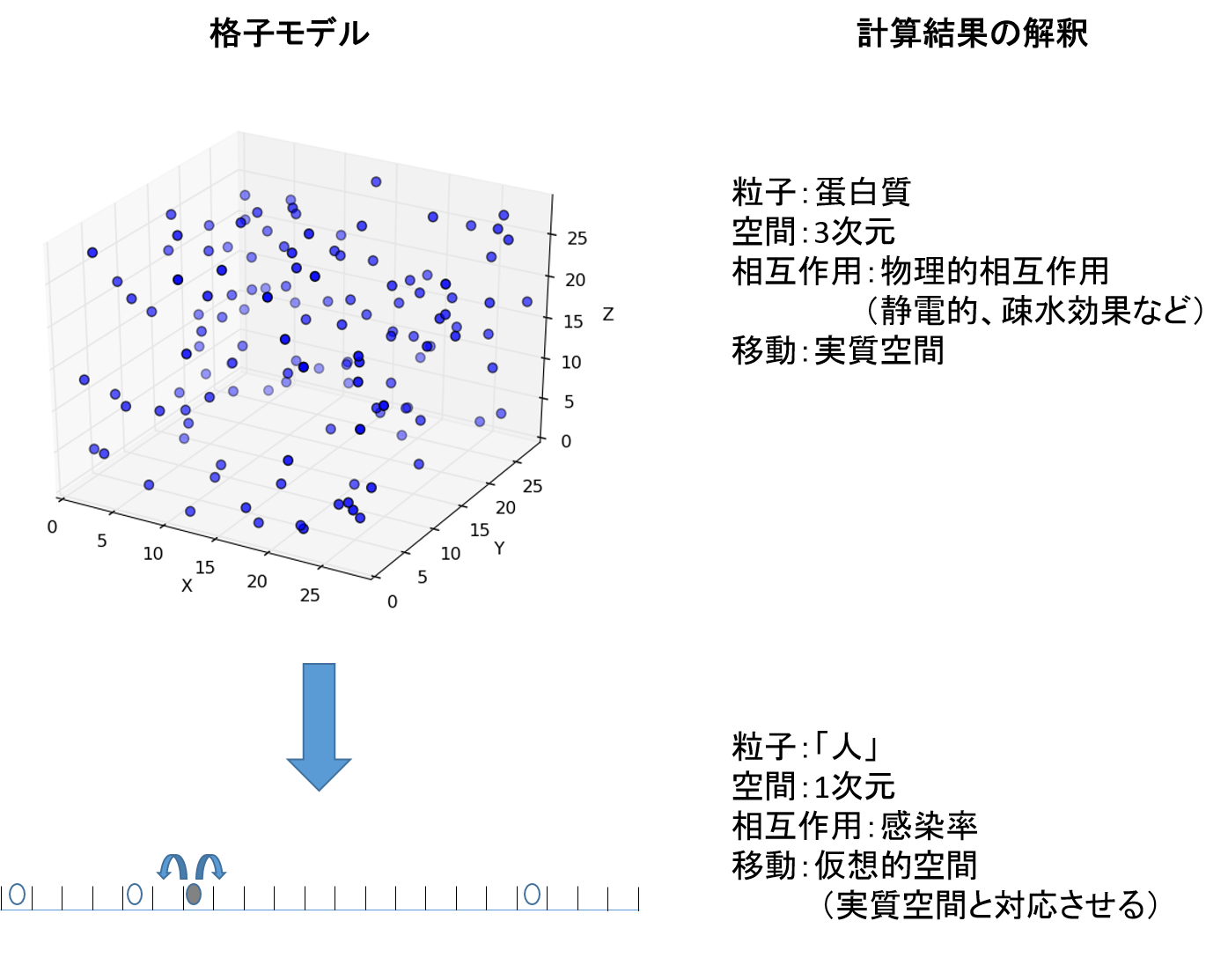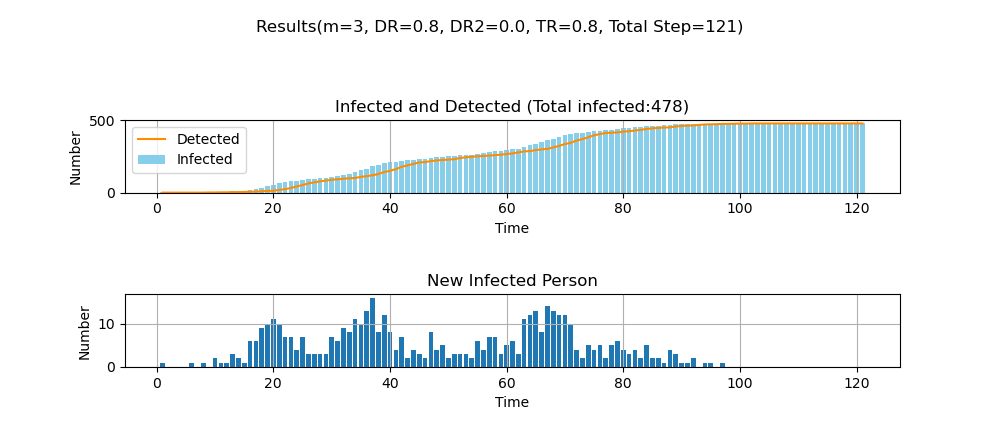Stochastic modeling of the effects of human-mobility restriction and viral infection characteristics on the spread of COVID-19 ~Towards a semi-quantitative prediction of the effects of lockdown on viral spread~
August 18, 2020
The Kuroda and Mizutani laboratories of Tokyo University of Agriculture and Technology have used a lattice model, initially developed for analyzing protein aggregation, to analyze the effect of human mobility restriction on the spread of viral infection. In this model, each particle on a one-dimensional lattice represents a “person” instead of a protein, and “intermolecular interaction between proteins” is interpreted as “infection probability.” In the model, when two people reside simultaneously at the same site, infection occurs with a given probability. The model uses three adjustable parameters to describe (i) virus transmission probability, (ii) virus detection sensitivity, and (iii) human mobility extent. This model is able to qualitatively or semi-quantitatively predict the increase in the number of infected people depending on the time and extent of movement restriction, i.e., the severity of the lockdown.
? A manuscript describing the research is available on medRxiv as of July 30
? (doi: https://doi.org/10.1101/2020.07.28.20163980 :Under peer review)

Current situation
COVID-19 has spread all over the world within a few months after the disease was first confirmed in Wuhan, China, in December 2019. Since then, more than 14 million cases have been reported worldwide and over 600,000 fatalities (July 2020). Since COVID-19 infections are believed to result from close human-to-human contact, many countries have implemented human movement restriction policies to reduce interpersonal contact. Indeed, without any specific therapeutic treatment yet available, movement restriction measures have been the only answer to the spread of COVID-19. However, in order to maintain the social and economic infrastructure, most countries are seeking strategies to relax lockdown and mobility restrictions while minimizing the number of infectious contacts.
Research teams
This research was conducted at the Tokyo University of Agriculture and Technology, Faculty of Engineering (Professor Yutaka Kuroda and graduate students Yuki Matsuzawa and Shiho Ando) and Faculty of Agriculture (Professor Tetsuya Mizutani). Also involved in the collaboration were Dr. Hiromichi Tsurui (Juntendo University) and Dr. Damien Hall (Nagoya Institute of Technology). The computer program will be available after acceptance of the paper at http://domserv.lab.tuat.ac.jp/COVID19.html.
Research Outcome
In line with general expectations, our model indicated that a full restriction of human mobility yields the best result, i.e., the lowest total number of infections. However, some observations were less intuitive. For example, our model indicates that the probability of infection is zero below a critical value for human mobility, which depends solely on the population density. Above this critical juncture, the risk of infection rapidly reaches an asymptotic value that is also dependent on the population density. In addition, the model also found that lockdown alone is not effective without a detection level of more than 40% of infected cases (when accompanied by quarantine). In addition, detection and isolation of pre-symptomatic patients at a level greater than 20%, reduces the number of infected to less than one-tenth of a scenario where no measures are taken. Finally, a moderate lockdown can be as effective as a full lockdown if the viral infection rate is kept below 40%, as would be the case through respecting social distances and/or wearing masks.
?

Perspectives
Many of the current epidemiological models that analyze the spread of viral infections co-opt analytical models previously developed from consideration of molecular diffusion and collision. The mathematical formulation of such models tends to be complicated. On the other hand, the one-dimensional lattice model introduced here is mathematically very simple, and the interpretation of the adjustable parameters is straightforward. Our model can be readily adapted to consider more sophisticated situations than the one described in our manuscript. However, as with all simulations, care must be taken in interpreting the results. For example, there is some ambiguity in correlating the unit time and unit mobility to actual time and distance scales in the real world. With these caveats, we believe that our stochastic modeling approach can provide significant insight for assessing the effects of mobility restriction on the spread of viral infection.
Glossary
Lattice model: It is a kind of coarse-grained model, which is used for analyzing the behavior of a complex system such as for the molecular modeling of biomolecules.
◆Contacts◆
Yutaka Kuroda
Professor, Division of Biotechnology and Life Science, Institute of Engineering,
Tokyo University of Agriculture and Technology
Tel +81-42-388-7794
Tetsuya Mizutani
Professor, Research and Education Center for Prevention of Global Infectious Diseases of Animals, Tokyo University of Agriculture and Technology
Tel +81-42-367-5749
Related Information
TUAT research factors (English): http://www.rd.tuat.ac.jp/en/activities/factors/index.html
Researcher information (Japanese):Yutaka Kuroda
? ? ? ? ? ? ? ? ? ? ? ? ? ? ? ? ? ? ? ? ? ? ? ? ? ? ?Tetsuya Mizutani
Press release (Japanese): Stochastic modeling of the effects of human-mobility restriction and viral infection characteristics on the spread of COVID-19 ~ロックダウンによるコロナウイルス感染抑制効果の半定量的予測に向けて~(PDF:457KB)
